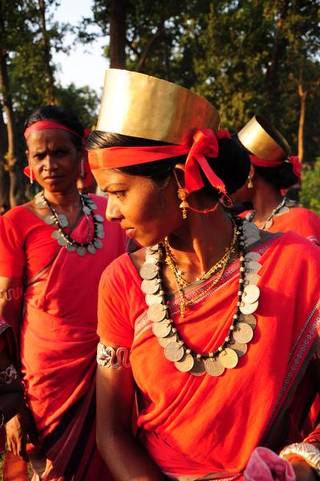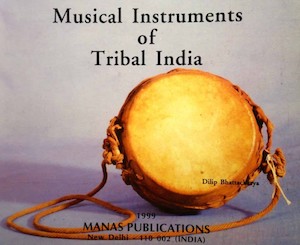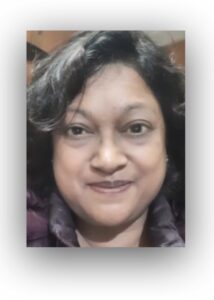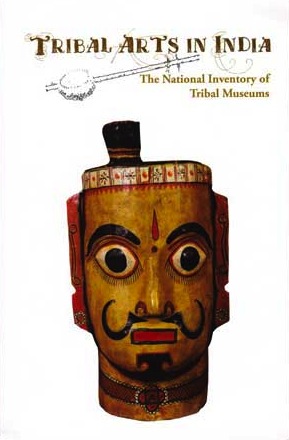
In the heart of Bastar, where the beauty of the jungle holds sway, is a Dasara celebration unchanged by the passage of time | Read the full story and view more photos here >>She’s attired in a shocking pink sari tied till the knees, adorned with chunky armbands and anklets in silver, double nose-pins in gold, and a necklace made with cowries. There’s festive commotion around her, but the silver citizen from the Halba tribe is engrossed with her red mobile phone.
“She’s waiting for a call from bapa, my father,” her granddaughter, dressed in a feathery white frock, tells me. “The phone is her prized possession now. However, the first time my grandmother heard bapa’s voice she shrieked and threw it away, thinking the devi had reduced him to this size,” she laughs. “There was commotion in the village and it was only when bapa appeared in person the next day that she recovered,” smiles the granddaughter, giving an indulgent hug to her grandmother, now happily chatting away on the little instrument.
In a way, the duo and their mobile is the story of Bastar, one of the most absorbing regions of India. It’s in step with modern ways, yet many a custom of its people hasn’t changed in centuries. Nowhere is that contrast more visible than at the celebrations of the Bastar Dasara, in Jagdalpur, which is where I met the two. […]
This is a Dasara where there is no Lord Rama or Ravana and no good over evil. This is an event unique to Bastar, dating back to the 15th Century, when Raja Purushottam Deo of the Kakatiya dynasty was conferred the title of ‘rath pati’, or the one who has celestial permission to lead sitting on a chariot, during his visit to the Jagannath temple in Puri. A 16-wheel wood chariot was presented to him, and ever since a rath has remained central to festivities that celebrate the title bestowed on their king. […]
Bastar Dasara kicks off on Hareli — a harvest celebration held on the first day of the lunar month of Shravan sometime in the last week of July — and ends 75 days later, ranking it among the longest festivals around the world. The culmination is in October, and during the last 12 days (which coincide with country-wide celebrations of Navratri-Dasara), apart from hailing their king, Bastar also worships its presiding deity Goddess Danteshwari, an incarnation of shakti, the feminine force. The 14th Century Danteshwari Temple in Dantewada, dedicated to her, is among the 52 revered shakti peeths across India. […]
To me, it seems the entire tribal population, the Gond, Bhatra, Muria, Halba, Dhuruva [Dhruva], Baiga and more, have left home and walked to be part of the revelry. The most visible are persons from the bison-horn Muria tribe, dressed in red and white, who traditionally close the festival. They dance and sing their way into the night to the sounds of drum beats.
As part of the celebrations, the doors of the Jagdalpur Palace are thrown open, and the visiting population queues up to pay obeisance to their ‘raja’. […]
Every year, a new chariot is constructed for the festival. And as Dasara enters Day 10, while Ravana goes up in smoke in other parts of India, in Jagdalpur, the chariot is pulled around town. […]
As per ritual, the chariot is ‘stolen’ by the Muria tribe at night and taken outside the city. It returns only after the raja offers rice from the fresh harvest to the devi. The return of the chariot marks the culmination of the festival and a series of prayers are offered, chiefly for a bumper crop. […]
Source: “To the call of the distant drum” by Brinda Suri, The Hindu, 17 October 2018
URL: https://www.thehindu.com/life-and-style/travel/to-the-call-of-the-distant-drum/article25247376.ece
Accessed: 16 July 2020

Musical Instruments of Tribal India
by Dilip Bhattacharya >>
Bastar District is a district of the state of Chhattishgarh in central India. Jagdalpur is the district headquarters. The district has an area of 4029.98 km². .Bastar District is located in Chhattishgarh in the central parts of India. Bastar District, before splitting districts, was one of the largest districts in India. The district headquarters are in located at Jagdalpur. The district covers an area of around 8755.79 sq km. Bastar District is located in the southern part of Chhattishgarh and is situated at a height of 2000 ft plateau from sea level. Bastar had population of 1,411,644 in 2011 including Kondagaon district, of which male and female were 697,359 and 714,285 respectively. Of the total population more than 70 per cent are tribal people like Gond Tribe, Maria, Muria, Dhruva, Bhatra, Halba Tribe, etc. […]
Its capital was Jagdalpur, where Bastar royal palace built by its ruler, when its capital was shifted here from old capital Bastar.
Later at some point in the 15th century Bastar was divided into two kingdoms, one based in Kanker and the other ruled from Jagdalpur. The present Halba Tribe claims to descend from the military class of these kingdoms.
Pravir Chandra Bhanj Deo (1929–1966), the 20th and the last ruling head of the Bastar state, ascended the throne in 1936, before it acceded to India in 1948 during the political integration of India.Maharaja pravir Chandra Bhanj Deo was immensely popular among the tribals.
A large number of Bastar tribals are still living in deep forests and avoid mixing with outsiders in order to protect their own unique culture. The tribes of Bastar are also known for their colorful festivals and arts and crafts. The Bastar Dussehra is the most famous festival of the region. The tribals of Bastar were also amongst the earliest to work with metal and have expertise in making beautiful figurines of tribal gods, votive animals, oil lamps, carts and animals.
Traditionally the area is mentioned as Dandakaranya in the epic Ramayana, and part of the Kosala Kingdom in the Mahabharata. Around 450 AD, Bastar state was ruled by Nala King, Bhavadatta Varman, who is mentioned to have invaded the neighboring Vakataka kingdom, during the reign of its King, Narendrasena (440-460)
The princely state of Bastar was established around 1324 AD, when Annama Deva, brother of the last Kakatiya King, Pratapa Rudra Deva (r. 1290-1325), left Warangal and established his kingdom at Bastar under the tutelage of local goddess, ‘Dantheshwari’, who still is the tutelary deity of Bastar region, her famous Dantheshwari Temple stands today at Danthewada, also named after her.
Annama Deva ruled till 1369 when he was followed successively by Hamir Deva (r. 1369-1410), Bhaitai Deva (1410–1468), Purushottama Deva (1468–1534) and Pratapa Raja Deva (1602–1625) after which the Bastar branch of the dynasty became extinct in the third generation with Dikpala Deva (1680–1709), after which a descendant of the younger brother of Prataparaja Deva, Rajapala Deva became the next King in 1709. Rajapala Deva had two wives, first a Baghela Princess, married, who had a son, Dakhin Singh, secondly, a Chandela Princess, who has two sons, Dalapati Deva and Pratap, trouble however struck again when after the death of Rajapala Deva in 1721, the elder queen ousted other claimants and placed her brother on the throne of Bastar, Dalapati Deva took refuge in the neighbouring kingdom of Jeypore and finally regained his throne a decade later in 1731.
Bastar, the land of tribes and about 70% of the total population of Bastar comprises tribals, which is 26.76% of the total tribal population of Chhattisgarh. The major tribes of the Bastar region are the Gond, Abhuj Maria, Bhatra Bhatra are divided into Sub Cast San Bhatra ,Pit Bhatra, Amnit Bhatra Amnit Hold Highest Status, Halbaa, Dhurvaa, Muria and Bison Horn Maria. The Gonds of Bastar are one of the most famous tribes in India, known for their unique Ghotul system of marriages. Gonds are also the largest tribal group of central India in terms of population.
The tribes of Bastar region are known for their unique and distinctive tribal culture and heritage in all over the world. Each tribal group in Bastar has their own distinct culture and enjoys their own unique traditional living styles. Each tribe has developed its own dialects and differs from each other in their costume, eating habits, customs, traditions and even worships different form of god and goddess.
Source: Official website, Govt. of Chhattishgarh
URL: http://bastar.gov.in/en/about-bastar
Accessed: 19 October 2018
[Bold typeface added above for emphasis]
Tribal communities in the central Indian region of Bastar:
Baiga | Bhatra | Dhruva | Gond | Halba | Madia | Maria | Muria
The best of what is in tribal culture owes to the ghotul [learning centre]. However, under the influence of the new education, the ghotul has suffered a systematic disintegration.
Uma Ram in Issues in Tribal Education in Bastar >>
Writings of Verrier Elwin on tribal education and more >>

Read the inaugural Speech by Dr. Ivy Hansdak: “Is tribal identity relevant in today’s world?” delivered during the conference titled “Tribes In Transition-II: Reaffirming Indigenous Identity Through Narrative” | Conference report | Video presentation “Tribes in Transition III” (September 2021): Inaugural Session & Keynote Speech by Prof. Anvita Abbi >>
Tips for using interactive maps
Toggle to normal view (from reader view) should the interactive map not be displayed by your tablet, smartphone or pc browser
For details and hyperlinks click on the rectangular button (left on the map’s header)
Scroll and click on one of the markers for information of special interest
Explore India’s tribal cultural heritage with the help of another interactive map >>

Tribal Arts in India | Worldcat.org >>
Free eBooks & Magazine by Bhasha Research and Publication Centre: Adivasi literature and languages >>
See also